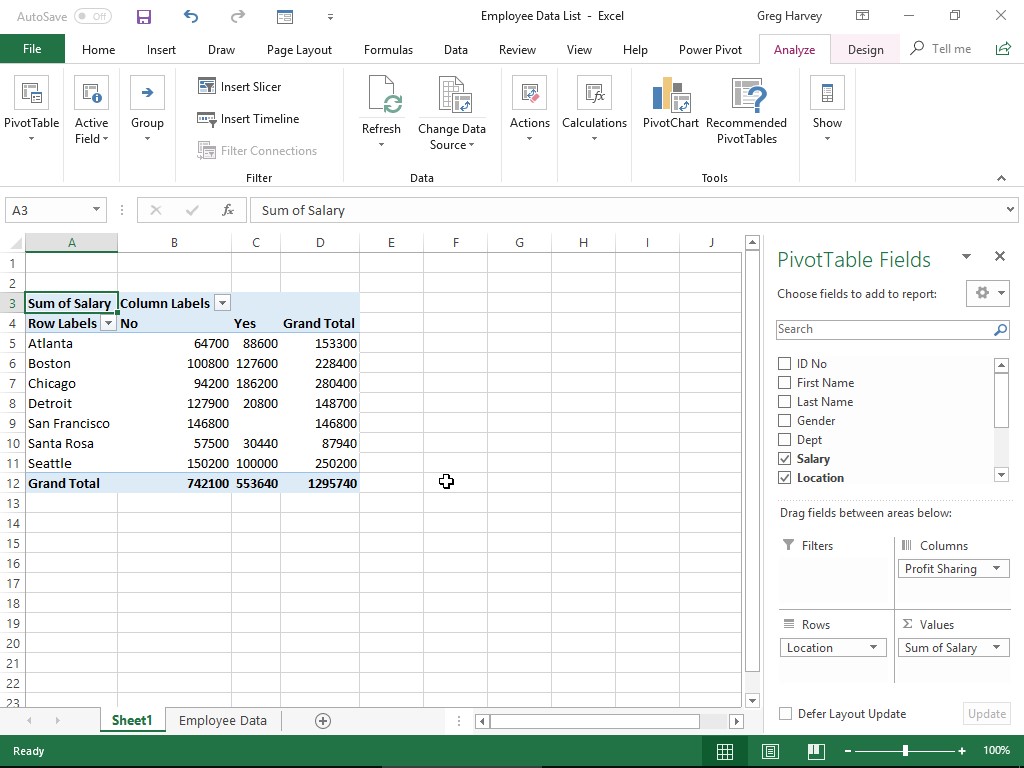
Great & Informative, I have been working on tables since LOTUS 123, learned many tricks in handling and presenting the data, however would like to share something or may not come across on the feature, further may help to improvise Hope you understand this if not let me know where to send samples. Each entry would have a different DEBIT amount subtracted from the BALANCE and they need to be ordered in the pivot table as entered in the check register (raw data). on 10/01/18 I might enter a transaction for RENT, AUTO payment, Walmart, Target, Aldi.

It’d be okay if I only had one entry per day (DATE), but sometimes I have multiple transactions in one day i.e.
#Excel pivot tables cheat sheet how to#
Nowhere can I find how to NOT have the pivot table sort or how to make it sort by nothing. This a problem because it can/will throw off the correct balance. Everything works GREAT except the description of transactions are sorted alphabetically instead of how they are actually entered in the raw data. Hi John…I love your site!! Please, could you help me? I created a pivot table to be my checkbook register my raw data worksheet has been entered just as I would enter it in an actual register (but no check #): date, description of the transaction, debit amt., credit amt., and balance.

You can access this feature a couple of different ways. It’s so useful and powerful it really deserves a featured spot in the Analyze tab of the ribbon. Unfortunately it’s sort of hidden in the right click menu or as the secondary tab in the Value Field Settings. This stuff is already a baked in feature known as Show Values As. The next 10 tips are the among the most powerful features of pivot tables, yet most Excel users don’t know about them.Īt some stage you’ve probably gone off to the side of your pivot table and done some formula calculations to see how much of a percentage a value represents, calculated a running total or a percent difference.

Adding a rate calculation to the source data may result in incorrect calculations in your pivot table when viewing a pivot table at a more aggregated view than the data. If we want to calculate the Profit Margin on each order we could add another column with the calculation Profit Margin = 1 – (Total Cost / Total) or we can add calculated field.įor a rate type calculations like a profit margin, it’s better to add the calculations as a Calculated Field rather than add an extra column with the calculation to the source data. For example, our data contains a Total Cost and Total amount for each order. Add A Calculated FieldĪdding a calculated field to your pivot table is equivalent to adding a new column to your source data to perform a calculation based on the other data. This will allow you to make changes to your pivot table without the column width automatically adjusting.

In the PivotTable Options window under the Layout & Format tab uncheck the Autofit column widths on update box.


 0 kommentar(er)
0 kommentar(er)
